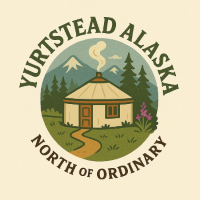Seven Second Version:
From stubborn ground rods and power problems to stove pipe acrobatics—this is how I powered up our Alaska yurt, learned the value of asking the right questions, and made it feel like home.
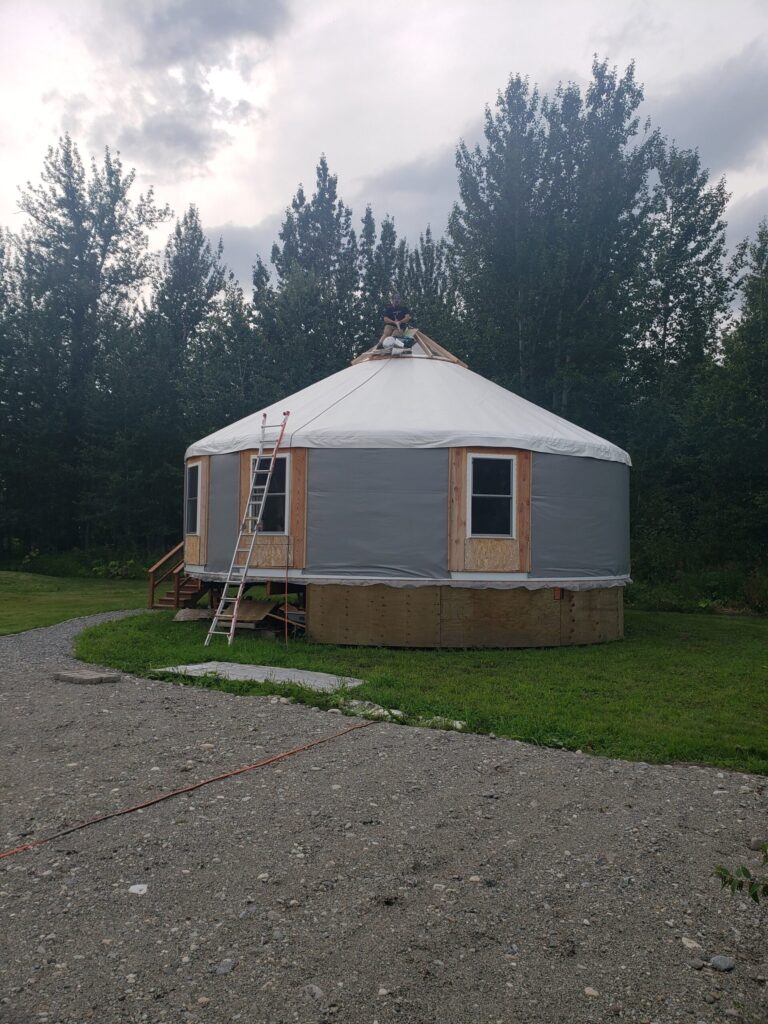
Summer Break, Alaska Style
Back in that season I mentioned in an earlier post, we’d hit a major slowdown in the building grind—partly on purpose, for more family time, and partly because Alaska summer moves faster than a magpie going after the sandwich you left on the picnic table for two seconds to wipe your toddlers nose while you are out camping. What?! Bitter? Me? Noooooo… but magpies… you watch yourself.
Still, even during that “slow” stretch, progress kept creeping forward, and I learned a lesson that would stick with me for the rest of the build: Ask better questions.
Power to the People (Or at Least to the Yurt)
Our temporary setup was a 100-foot extension cord from a temporary pedestal to the yurt. Fine for building, but not a forever solution.
It was time for permanent power. The power company’s documentation was… specific. Down to the exact models of meter bases they would accept. You couldn’t just grab any load center from the hardware store—it had to be one of their approved models, and the stores also carried plenty that weren’t on that list.
What the documentation didn’t mention anywhere was the need for a main line passthrough if you wanted to feed power on to a future house. I read that packet front to back, but it simply wasn’t in there—because it wasn’t a general requirement for every build. It was a requirement for my particular application of the load center. The power company would never spell that out in their documentation, and out of all the boxes on their approved list, only two would actually work for what I needed. I didn’t know that… until I was already neck-deep in the project.
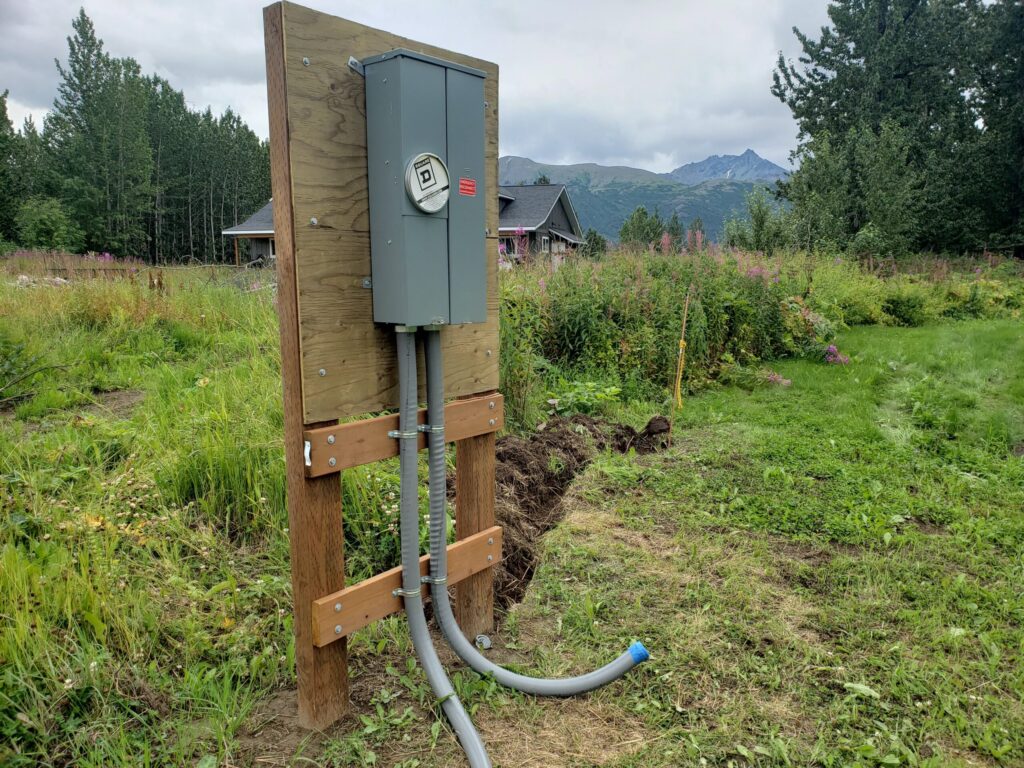
And here’s the thing—every time I called the power company, I got handed off like a hot potato. “You’ll need engineering for that,” or, “That’s more of a customer services question.” I’d explain what I was trying to do, only to realize later I had explained it wrong—because I didn’t yet know the right language to use. Eventually I learned to start my calls with, “Here’s my exact setup, here’s my problem, and here’s the part number of the box I’m using. Is it approved, and will it work for my long-term plan?” That one change shaved days off my wait time for answers.
Between supply chain delays, all those calls, and my slow crash course in “Power Company-ese,” weeks slipped by.
Somewhere in there, I drove in grounding rods—except one hit something underground that no hammer drill could touch. It also went in deep enough that I couldn’t get it back out. That stubborn rod still sticks up today. I call it The Rod in the Stone. Legend says only those worthy to build a yurt can pull it free. I couldn’t… so I built one anyway. Take that.
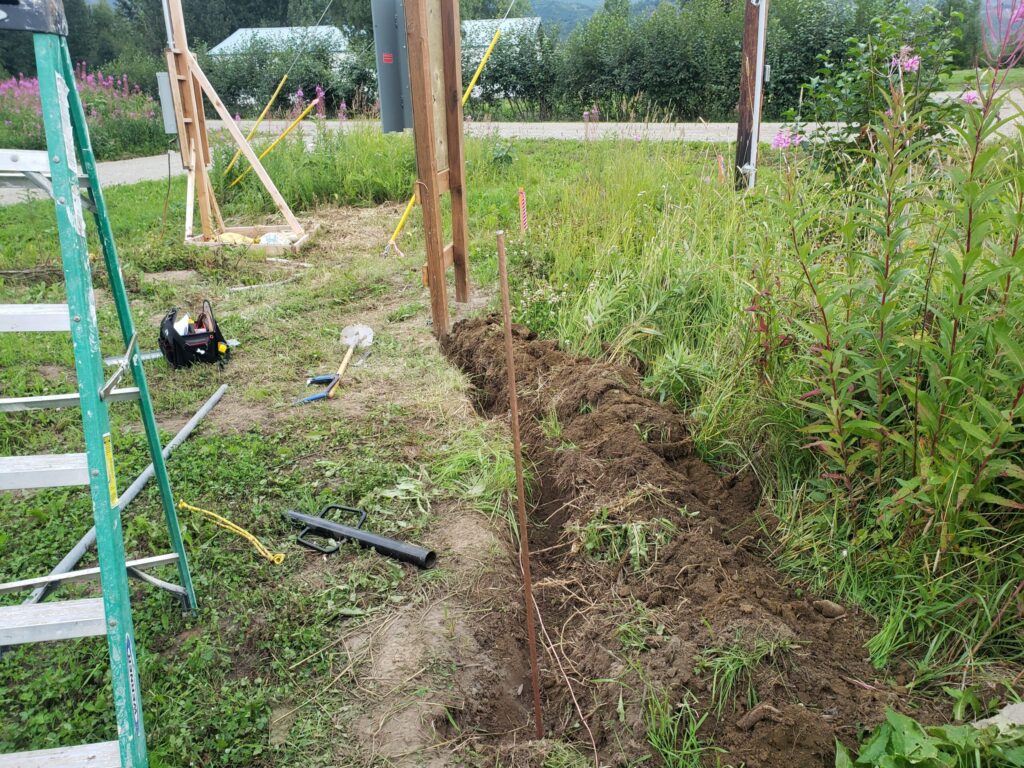
Finally, I got it to the point the power company could come out and install power even if I did have the wrong load center. That was future Jared’s problem and I needed to at least get back to running a 100 foot extension cord to the Yurt again. The engineer took one look and said, “Looks great” and 15 minutes later I had power to my permanent meter pedestal. Sort of felt anti-climactic after all that effort, but I will take what wins I can get!
Stovepipe Acrobatics
While wrangling the power setup, I decided to prep for winter heat—installing a Blaze King Princess woodstove (because every yurt needs a little royalty).
First up: cement board and slate tile for the hearth. It was my first time doing tile work, but since there were no cuts required, I crushed it. I’ll admit—it felt like cheating. Win.
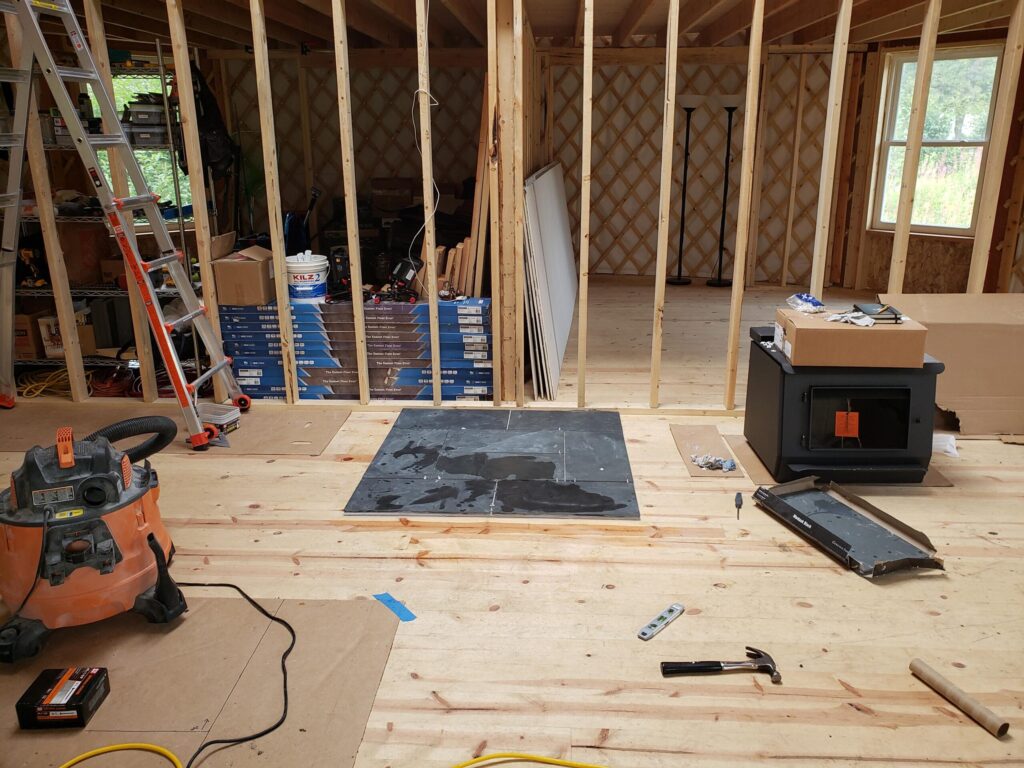
Then came the stove pipe install. The yurt company recommended a bigger size than my stove needed, but supply chain reality meant going with the smaller, correct size and custom-bending brackets to fit while on top of the yurt.
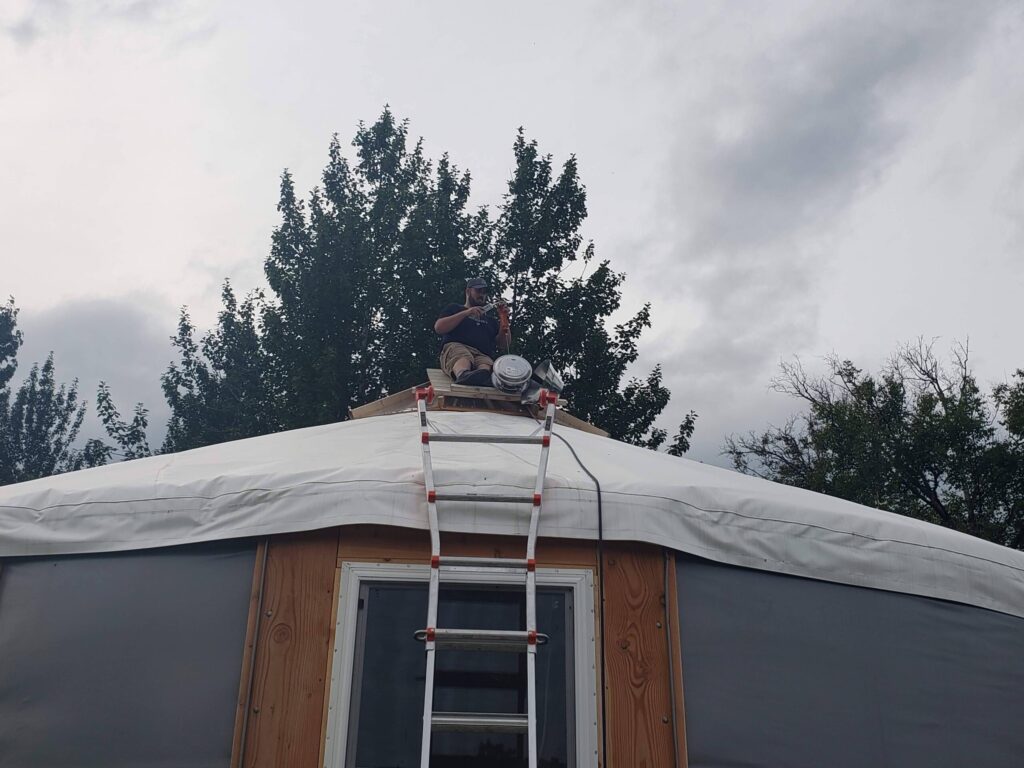
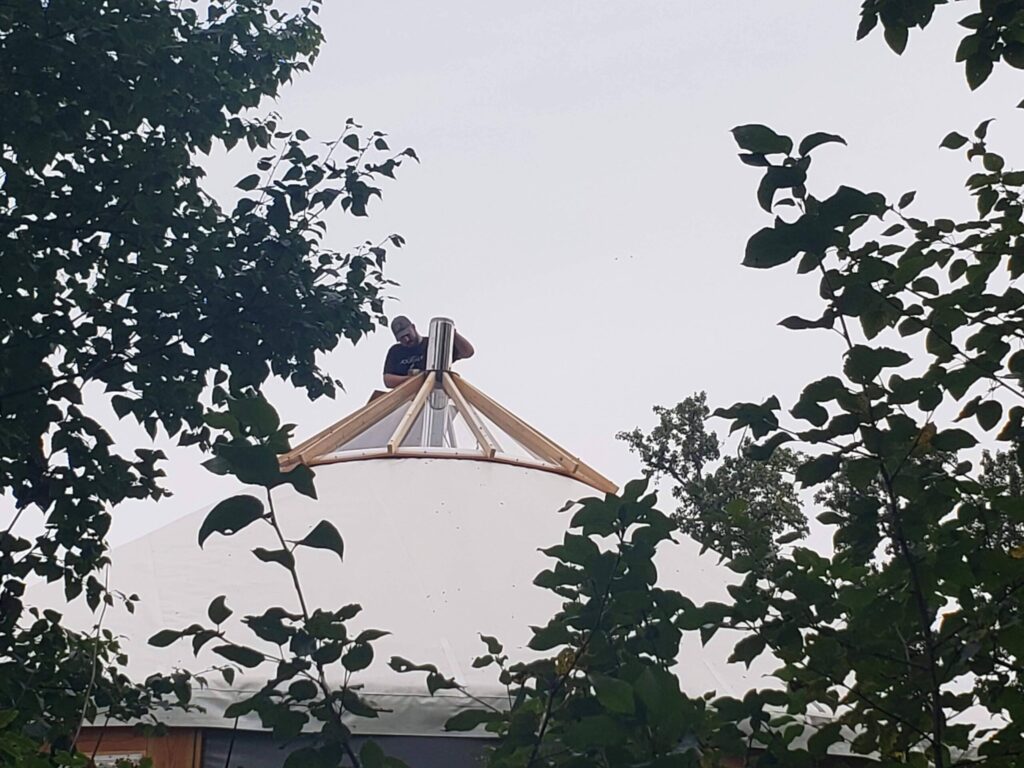
Just imagine – 20 feet of climb, a slick vinyl yurt roof during rainy season, and 40 pounds of triple-wall stainless steel pipe… and let’s just say I was thankful for my safety rope when I “only almost” fell once. There were days I’d climb up, tools in hand, only for a rain shower to blow in sideways, turning the roof into a backyard slip-and-slide. If the sun broke through long enough to dry things out, it was a mad dash to get up there before the next wave rolled in.
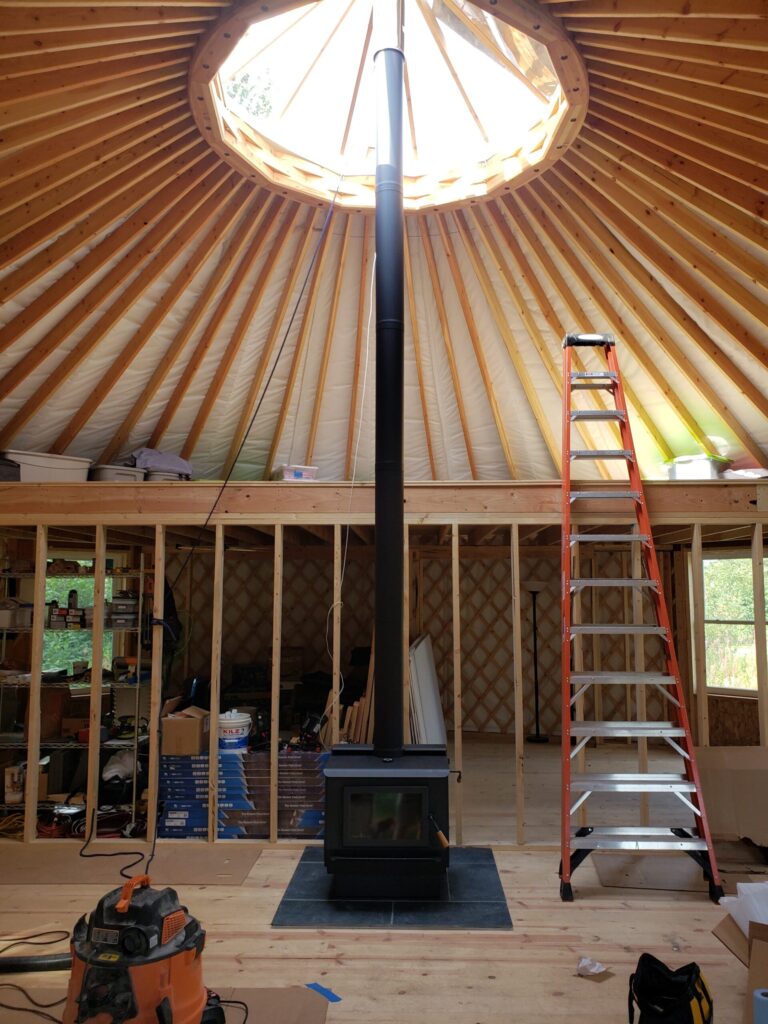
Building Meets Neighbors
One memorable workday, as I perched on the yurt roof, I waved enthusiastically at our new neighbors who had just moved in. They were out walking with their daughter. They didn’t cross the street to get away from the crazy guy on the yurt roof, so I’m counting it as a social win—we even managed a short conversation without me falling.
First Fire, First Kitchen Plans
With the storm collar jury-rigged—or is it jerry-rigged? My editor and I went back and forth on that one. I’ve always said “jerry,” but apparently “jury” is the correct saying. All these years thinking Jerry was just a slacker… Either way—jerry or jury—it was future Jared’s problem. So I climbed down, installed the interior pipe, wrangled the very heavy woodstove into place, and finally lit our first fire.
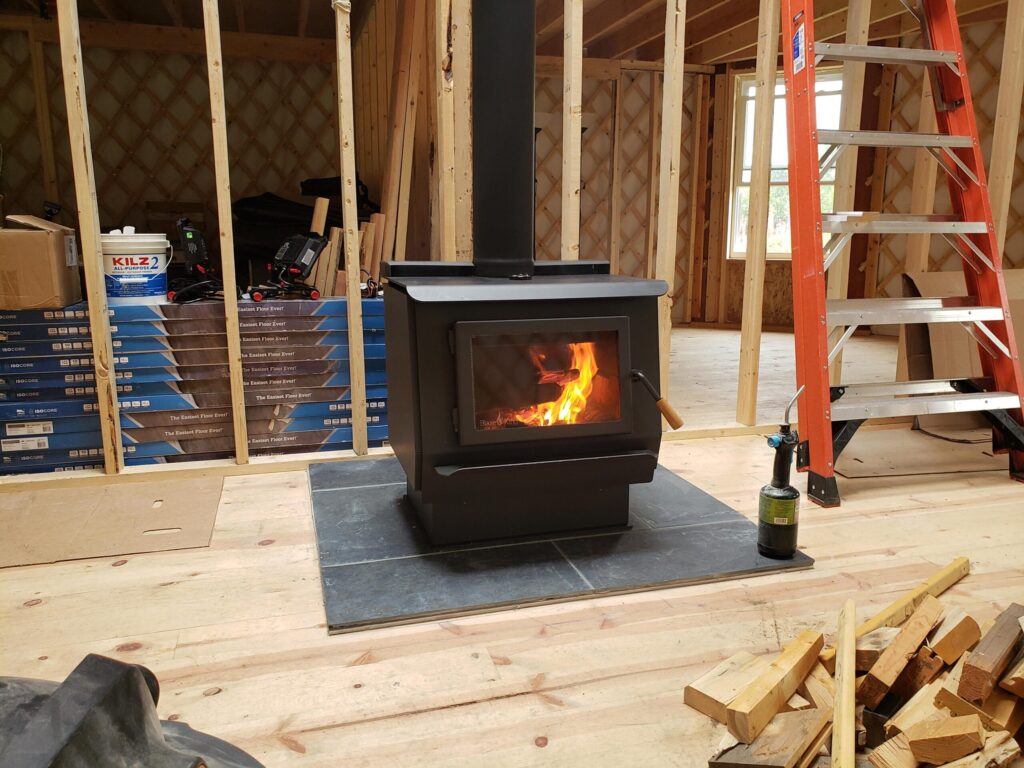
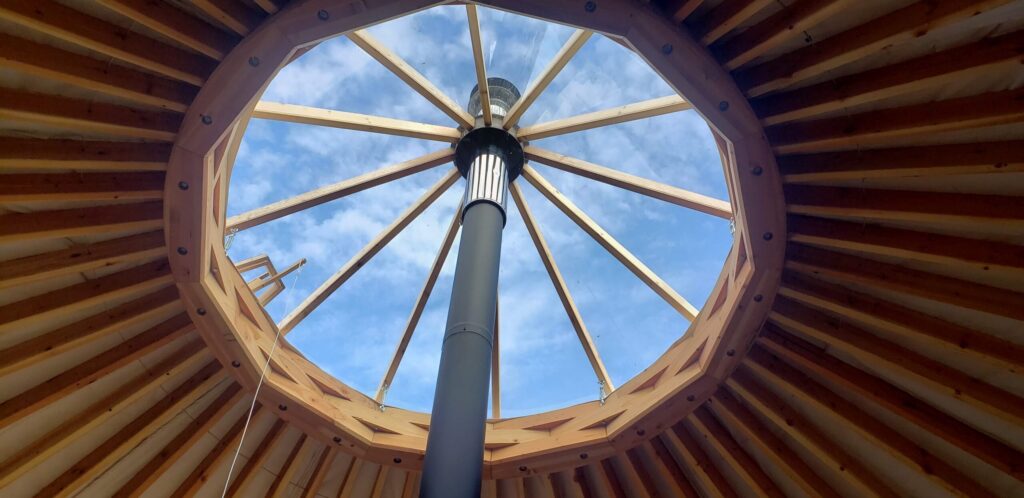
The moment the match touched the kindling, the yurt seemed to change. Smoke curled from the chimney, flames danced in the stove, and the sound of crackling wood wrapped around us like a blanket. The air filled with that sweet scent of seasoned firewood burning clean. My wife and kids came over to enjoy it, and for the first time, we weren’t just standing inside a project—we were standing inside a home. That same day, we cut cardboard templates to plan out our kitchen layout. Standing there in our “kitchen,” fire crackling beside us, it felt like we could almost see the finished place in our minds.
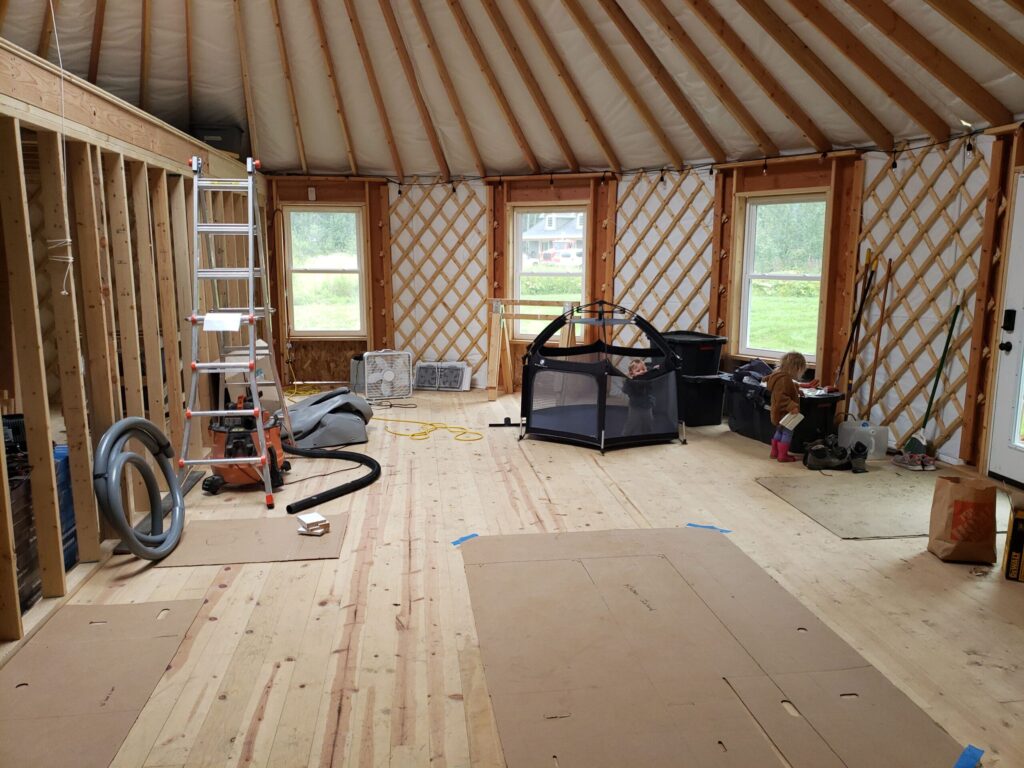
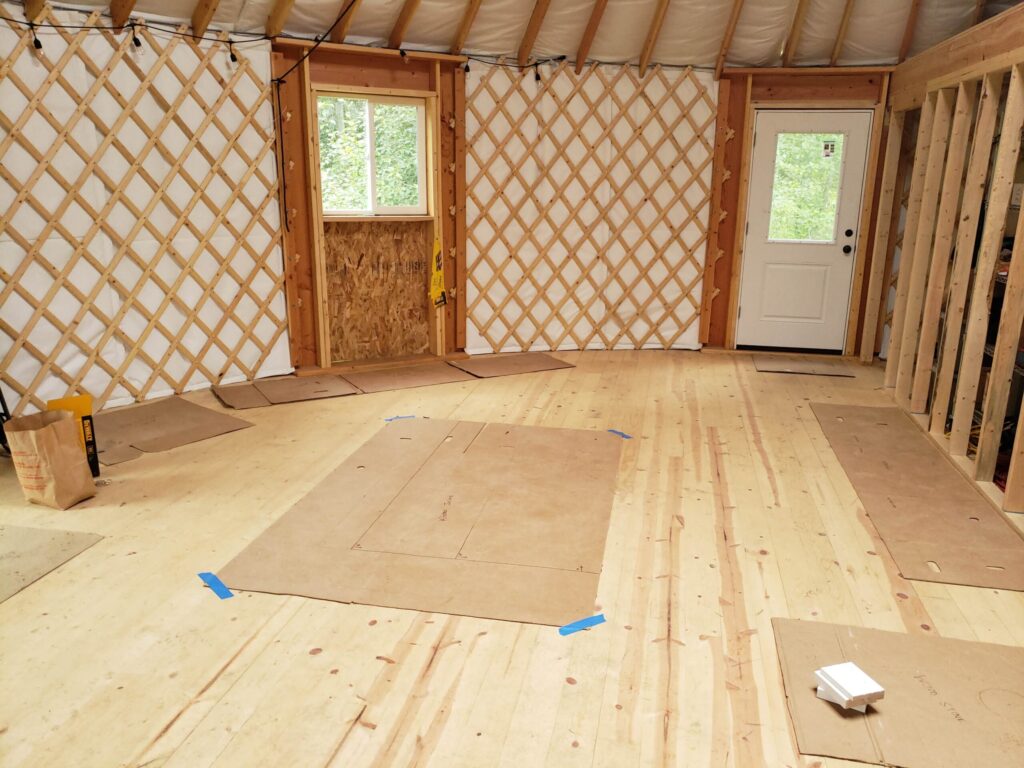
The Lesson: Questions Matter
If you’ve never navigated power company requirements or balanced stove pipe sizes with roof hardware, you learn quickly that the right question can save you weeks of work.
In my case, the wrong question cost me an entire meter box, more than one coffee bribe for an electrician friend, and at least a month of momentum.
Sometimes, the answer isn’t “work harder” but “ask better.” And when you get it right, the lights come on, the fire crackles, and the yurt feels just a little more like home.
